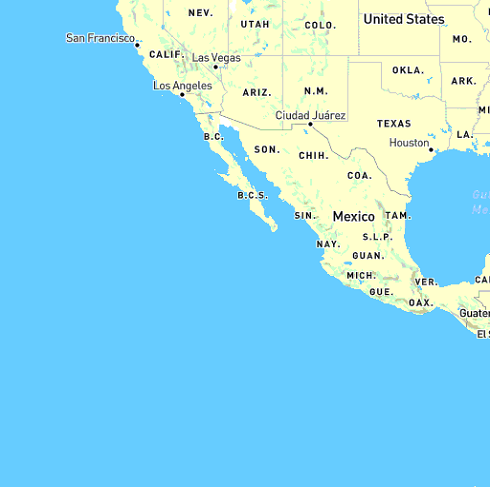Cash Management Account: Understand How It Works

Cash Management Accounts (CMAs) are becoming increasingly popular among investors and consumers seeking a practical and efficient way to manage their finances.
Ideal for those looking to simplify money management and maximize the return on their savings, CMAs offer convenience and flexibility in a single financial product.
Learn how a Cash Management Account (CMA) can help you manage your finances more efficiently by combining the features of traditional bank accounts with investment opportunities.
What is a Cash Management Account (CMA)?
A Cash Management Account (CMA) is a type of financial account that integrates the benefits of both checking accounts and investment accounts.
Unlike a regular bank account, a CMA allows funds to be easily transferred between investment opportunities and daily expenses, offering more flexibility to the account holder.
These accounts are typically offered by brokerage firms, financial institutions, and financial technology companies (fintechs).
With a CMA, users can access their funds for everyday spending, earn interest on idle balances, and invest in market assets—all with just a few clicks.
How Does a Cash Management Account Work?
A Cash Management Account operates as a hybrid tool that combines the benefits of a checking account with the ability to invest. Below are the key features of a CMA that make it an attractive option for managing cash flow:
1. Seamless Transfer Between Checking and Investments
One of the primary advantages of a CMA is the ease of transferring money between the part of the account used for daily expenses (like a checking account) and the part that generates a return on investment (such as a money market fund).
This means that idle balances can automatically be invested in low-risk options, ensuring that your money is continuously working for you when not being used.
2. Payments and Daily Transactions
Much like a traditional checking account, a CMA allows you to make everyday transactions, such as paying bills, withdrawing cash from ATMs, writing checks, and making purchases with a debit card.
The difference lies in the fact that, instead of keeping your money idle in a non-interest-bearing checking account, the balance in a CMA is typically invested, allowing it to earn a return while waiting to be spent.
3. Interest Earnings on Idle Balances
One of the key benefits of a CMA is that it allows you to earn interest on funds that would otherwise sit idle in a regular checking account.
While you’re not using the money, it can be automatically invested in short-term, low-risk investments like money market funds or fixed-income securities, giving you the potential to earn higher returns than you would in a regular bank account.
Key Benefits of a Cash Management Account
CMAs are a powerful tool for those looking to maximize their cash flow. Here are some of the main benefits that make them a popular choice for managing money:
1. Greater Financial Flexibility
With a Cash Management Account, users have the ability to easily access funds for everyday expenses while still being able to invest their money automatically in low-risk options.
This level of financial flexibility is not typically offered by traditional checking accounts, making CMAs an attractive option for those who want to keep their money working at all times.
2. Efficient Cash Management
For individuals managing large sums or maintaining high account balances, a CMA allows for more efficient use of their funds.
Instead of letting money sit idle in a low-interest account, CMAs provide opportunities to invest, making them ideal for people who want to optimize their cash flow.
3. Integration with Other Financial Services
Many CMAs are integrated with other financial products, such as automated investments or financial planning tools.
This allows users to manage their entire financial life on a single platform, simplifying the process of managing both spending and investing.
4. Security and Guarantees
Many Cash Management Accounts come with security features similar to those of traditional bank accounts, such as FDIC insurance (in the U.S.), which protects funds in the event of a financial institution’s failure.
This provides an extra layer of security for account holders, making CMAs a reliable option.
How is a CMA Different From a Traditional Checking Account?
While a CMA and a traditional checking account share some similarities when it comes to daily transactions, there are several key differences in how the money is managed:
- Interest on Balances: Traditional checking accounts typically offer little to no interest on balances. In contrast, CMAs invest idle balances in low-risk financial instruments, which can generate a return.
- Integration with Investments: Most checking accounts do not provide a direct link to investment opportunities, whereas a CMA is designed to facilitate the seamless connection between your cash and investment portfolios.
- Access to Funds: Although CMAs allow for withdrawals and daily transactions, there may be different rules about how and when funds can be accessed, especially if they are invested in financial markets.
Types of Cash Management Accounts
There are several types of Cash Management Accounts, each offering slightly different features depending on the institution providing them. Here are the most common types:
1. Brokerage Cash Management Accounts
These are CMAs offered by investment brokers. They are ideal for individuals who already have brokerage accounts and want to keep their funds in a single place, allowing for easy transfers between investment portfolios and daily spending accounts.
Brokerage CMAs typically come with features such as debit cards, ATM access, check-writing capabilities, and the ability to earn interest on idle balances by investing in low-risk assets such as government securities or money market funds.
2. Fintech Cash Management Accounts
Financial technology companies (fintechs) have entered the cash management space by offering innovative solutions tailored to the needs of tech-savvy consumers.
Fintech CMAs are often accessible through mobile apps and come with features such as automatic saving options, real-time alerts, and integration with other financial tools like budgeting or investment platforms.
These accounts may also provide higher interest rates on balances than traditional banks, thanks to their lower overhead costs.
3. Bank-Linked Cash Management Accounts
Some banks offer hybrid accounts that blend traditional banking services with cash management features.
These accounts may allow customers to link their CMA to their checking or savings accounts, giving them easy access to their funds while still benefiting from the interest-earning capabilities of a CMA.
How to Open a Cash Management Account
Opening a Cash Management Account is typically a straightforward process and can be done through brokerage firms, banks, or fintech platforms. Here’s the basic process for getting started:
1. Choose a Financial Institution
Many brokerage firms, banks, and fintech companies offer CMAs, each with different fees, features, and benefits. It’s important to compare options and select the institution that best fits your financial needs.
2. Complete the Necessary Documentation
Similar to opening a traditional bank account, you will need to provide some basic information when opening a CMA, such as identification documents, proof of address, and financial details.
3. Fund the Account
Once the account is set up, you will need to deposit funds to start using it. Some CMAs may require a minimum deposit amount, while others may not.
4. Set Up Automatic Investments
Most CMAs offer the option to automatically invest idle balances in low-risk assets like money market funds. You can set up this feature to ensure that your money is continuously working for you, even when you’re not using it.
5. Link to Other Accounts
If you have existing checking or savings accounts, you may want to link them to your CMA for easy transfers and access to funds. This will allow you to move money between accounts as needed and ensure that your cash flow remains smooth.
Potential Drawbacks of a Cash Management Account
While Cash Management Accounts offer many advantages, there are some potential downsides to be aware of before opening one:
1. Fees
Some CMAs may come with fees, such as monthly maintenance fees, ATM fees, or foreign transaction fees. These fees can vary significantly depending on the institution offering the CMA, so it’s important to read the fine print and understand the costs associated with the account.
2. Limited ATM Access
While most CMAs offer ATM access, there may be limits on the number of withdrawals you can make each month without incurring fees. Additionally, some institutions may not have a wide network of ATMs, making it harder to access cash in certain locations.
3. Potential Delays in Fund Access
If your funds are invested in financial markets, there may be delays in accessing your money when you need it. For example, if your funds are tied up in a money market fund, it could take a day or two to transfer the money back to your spending account.
4. Interest Rates Can Vary
While CMAs typically offer better interest rates than traditional checking accounts, the rates can vary depending on market conditions. In periods of low interest rates, the returns on your CMA may be minimal, reducing the overall benefit.
Conclusion
A Cash Management Account (CMA) is a powerful financial tool that allows users to maximize the use of their funds by combining the functionality of a traditional checking account with the benefits of investment opportunities.
With features like automatic investing, seamless transfers, and daily spending options, CMAs provide greater flexibility and efficiency for managing your money.
However, it’s important to carefully consider the fees, limitations, and interest rate fluctuations that can come with a CMA.
By comparing your options and choosing the right financial institution, you can make the most of your cash management strategy and enjoy the convenience of having all your finances in one place.





